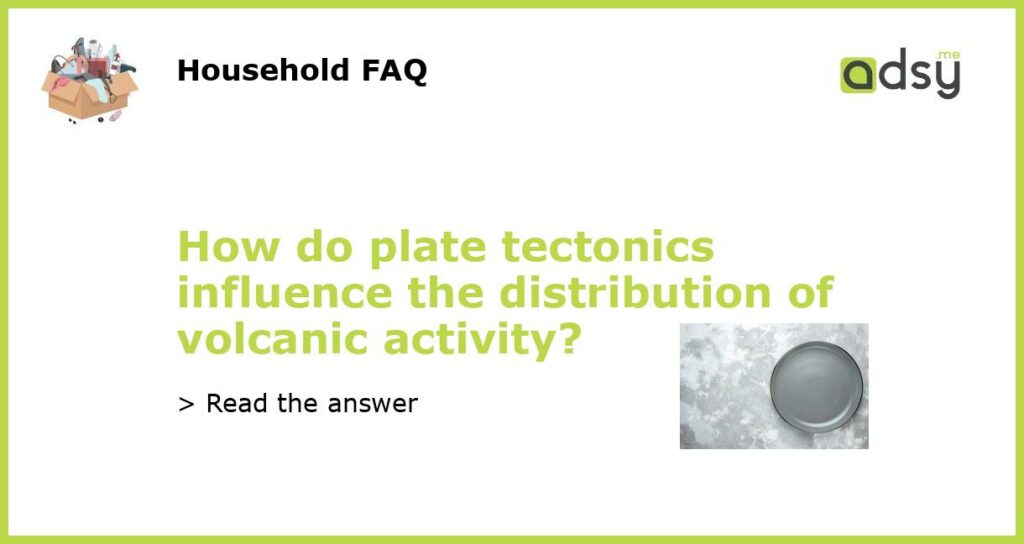Plate tectonics and volcanic activity
Plate tectonics is the scientific theory that explains the movement of the Earth’s lithosphere, which is made up of several large and small plates. These plates float on the semi-fluid asthenosphere beneath them. Volcanic activity is closely related to plate tectonics, as the movement and interaction of these plates can lead to the formation of volcanoes. In this article, we will explore how plate tectonics influences the distribution of volcanic activity.
Convergent boundaries and volcanic activity
At convergent boundaries, two tectonic plates collide with each other. Depending on the type of plates involved, this collision can result in different types of volcanic activity. One common example is subduction zones, where an oceanic plate is forced beneath a continental plate. The subducting plate melts as it descends into the mantle, creating magma. This magma eventually rises to the surface, forming volcanoes. The Andes in South America and the Cascades in North America are examples of volcanic chains that were formed by subduction at convergent boundaries.
Divergent boundaries and volcanic activity
Divergent boundaries are where two plates move away from each other, creating a gap. This tectonic activity can lead to the formation of volcanic activity as magma rises to fill the gap. As the plates move apart, the pressure decreases, causing the mantle to melt. This melted rock, or magma, rises to the surface and solidifies, forming new crust. The Mid-Atlantic Ridge and the East African Rift Zone are examples of divergent boundaries where volcanic activity is present.
Hotspots and volcanic activity
While most volcanic activity is directly related to plate tectonics, there are exceptions. Hotspots are areas of intense volcanic activity that are not associated with plate boundaries. These are thought to be caused by mantle plumes, which are stationary upwellings of hot molten rock from deep within the Earth. As the plate moves over the hotspot, a volcanic chain is formed, with the oldest volcanoes being the farthest from the hotspot. The Hawaiian Islands and Yellowstone National Park are examples of areas where hotspots have created volcanic activity.
Transform boundaries and volcanic activity
Transform boundaries are where plates slide past each other horizontally. While these boundaries are not typically associated with volcanic activity, there are some exceptions. In certain cases, the sliding motion of the plates can cause the crust to crack and form fissures. This can allow magma to rise to the surface, resulting in volcanic activity. The Okavango Rift Zone in Botswana is an example of a transform boundary where volcanic activity has been observed.
In conclusion, plate tectonics plays a significant role in determining the distribution of volcanic activity. The collision of plates at convergent boundaries, the separation of plates at divergent boundaries, and the presence of hotspots all contribute to the formation of volcanoes. While most volcanic activity occurs at these plate boundaries, there are exceptions, such as volcanic activity at transform boundaries. Understanding the relationship between plate tectonics and volcanic activity is crucial for both scientists studying the Earth and for individuals living in volcanic regions affected by these natural phenomena.






